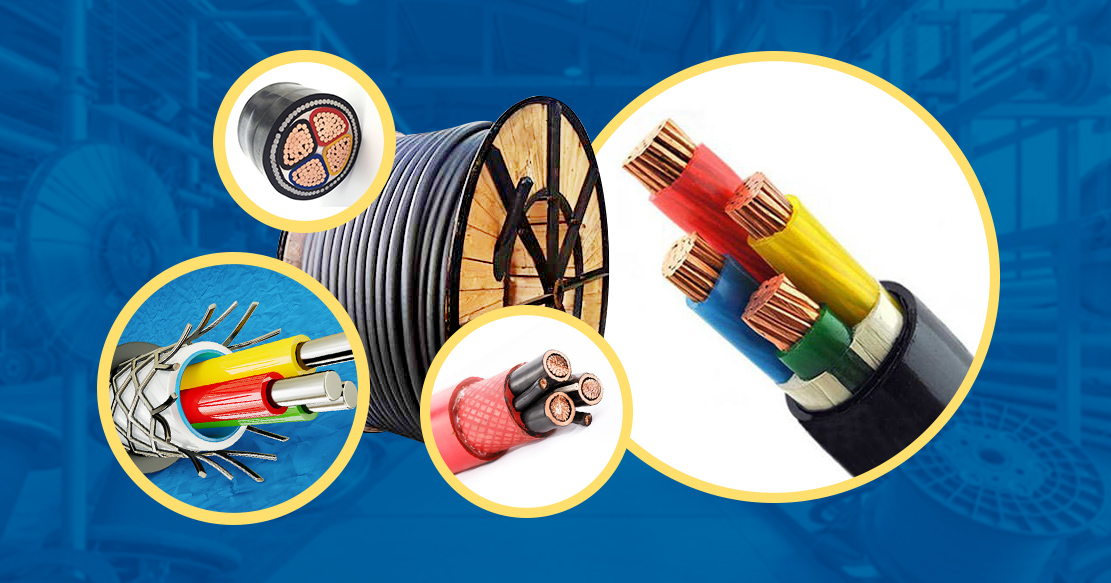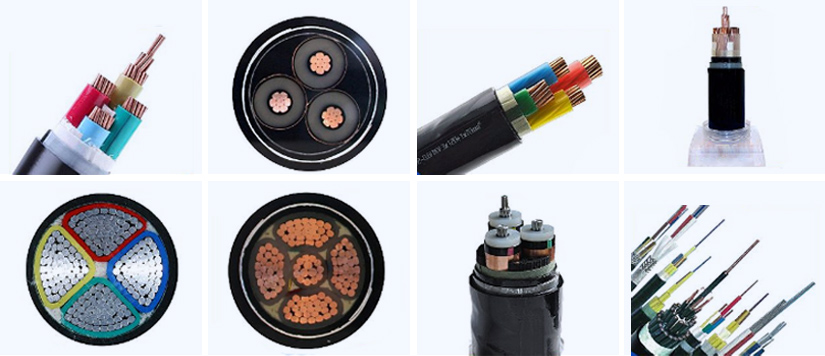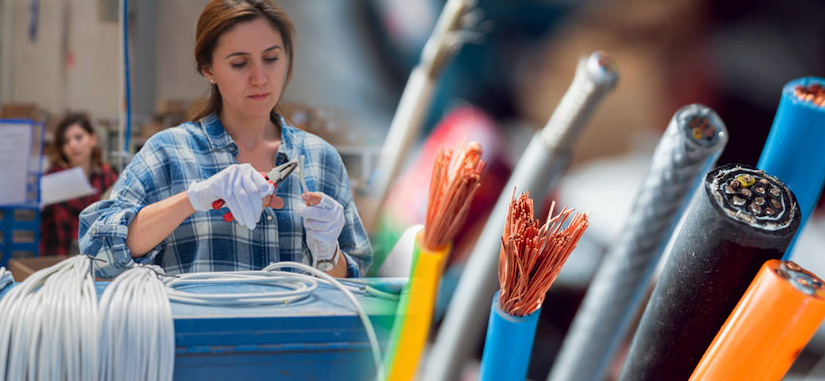
Armoring in Cables Significance, Classification and Manufacturing
Armored cable is a special cable with an extra protective layer to improve cable cores' performance, reliability, and safety. Armoring of cables reduces the need for electrical conduits, elbows, costly offsets, and conduit couplings.
Armor is steel in the form of wires or tapes enforced to the outside of cables. Armor wire is zinc-coated mild or high tensile steel wire or aluminum of different gauges for cable protection and to increase its tensile strength. Armored cables application is for electricity supply, cable ducting, underground systems, and cable and power networks.
What is Armoring in Cables and How it differs from Unarmored Cables
Armoring in cables provides metallic cable protection. It may also get used as a protective conductor. An armored cable has a metallic layer of strips or threads that protect the conductors from external forces, such as rodents and accidental impacts. Armoring can help prevent any internal irregularities causing the release of dangerous energy levels to the outside environment.
Materials used for armoring of cables are galvanized steel and aluminum. Carbon steel, as armoring material for the submarine application, gives a higher tensile strength. Mild steel is preferable for armoring of cables used on land.
Armored cables differ from unarmored cables as we can directly bury armored cables underground. The armor layer enhances the service life of mechanical protection, such as tensile strength and compressive strength. It also improves the anti-interference performance of cables through shielding protection. Armored cables get specially designed for areas prone to mechanical damage and corrosion.
Significance of Armored Cables and their Application
Armoring of cables increases the cable lifespan by improving the performance, reliability, and safety of the cable core. It isolates the cables from unwanted cuts or damage. We can use these cables where there is exposure to physical damage, mechanical damage due to accidents, underground or outdoor, installation or in tunnels, and earthing of equipment supplied by the cable.
Some of the applications of armored cables are as follows.
 Power System
Power System
In a power system, the armored cables used are overhead bare wires, bus bars, power cables, branch cables, magnet wires, and electrical equipment wires and cables for power equipment. For electrical transmission- we use three core armored cables, consisting of a set of insulted twisted brown, blue, green, and yellow copper wires in a black protective sheath. Four-core armored cables can convey low voltage and low current signals in single-phase systems.
 Information Transmission System
Information Transmission System
The armored cables used for information transmission system- includes, local telephone calls, TV Cables, electronic cables, radio frequency cables, optical fiber cables, data cables, electromagnetic wires, power communication, or other composite cables. Armored fiber optic cables are much stronger & tougher than normal-fiber optic cables and can withstand crush, pressure, and rodent issues.
 Mechanical Equipment and Instrumentation System
Mechanical Equipment and Instrumentation System
Mechanical equipment and instrumentation system use armor cables such as power cables, electromagnetic wires, data cables, instrumentation cables, etc., except overhead bare wires.
 Armor for Earthing
Armor for Earthing
The earthing conductor is a protective conductor connecting the main earthing terminal of an installation to an earth electrode or other means of earthing. Armoring has been found adequate to serve as the CPC (Circuit protective conductor) under the UK wiring regulation.
Classification of Armored Cables

We can categorize armor cables into steel wire armored cables, steel tape armored cables, aluminum wire armored cables, and braid wire armor cables.
 Steel Wire Armored (SWA) Cables
Steel Wire Armored (SWA) Cables
SWA cable is a power and auxiliary control cable designed mainly for electricity supply. These cables get found in underground systems and frameworks, cable networks, control systems, power networks, outdoor and indoor applications, and cable ducting.
SWA has mechanical protection as its design feature and is heavy, making cable extremely difficult to bend. Multiple core cables use steel wire armor to resist high pull loads.
 Steel Tape Armored (STA) Cables
Steel Tape Armored (STA) Cables
STA cables get used for transmission lines below 35Kv. The steel belt armored cable has a metal armor layer in the cable sheath, mainly used to prevent the cable from external squeezing. STA cables have two-layer steel tape winding in the inner sheath. Steel tape protects the cable when it gets buried underground.
The long-term working temperature for STA cables should not exceed 90 degrees Celsius, and the Z-high working temperature in the case of a short circuit should not exceed 250 degree-Celsius. The minimum bending radius of STA single-core cables is 15D, and multi-core cable is 12D.
 Aluminum Wire Armored Cables
Aluminum Wire Armored Cables
SAluminum armored cable gets used for power distribution and transmission, underground installations, outdoor and indoor applications, and power and control cables for cable ducts. The nature of aluminum is non-magnetic, and there is no induced current signal in the armor due to the current flowing in the main conductor. These cables are available in different voltage ratings, such as low-voltage, medium-voltage, and high-voltage.
 Wire-Braid Armor Cables
Wire-Braid Armor Cables
Wire braid armor cables or basket weave armor cables are preferable for light and flexible protection. The manufacturing of wire braid armor cable is the same as fibrous braid, and the metal gets directly combined over the cable, as an outer covering.
The metal used to make the braid is galvanized steel, copper, bronze, or aluminum.
Manufacturing of Armored Cables
The construction or manufacturing of armored cables consists of the following five stages.

 Conductor
Conductor
The conductor is the material through which the current circulates and can carry the electric current from one place to another. Copper has more conductivity than aluminum. However, Copper and aluminum are the best choice for conductors.
 Insulation
Insulation
We can use insulation of the compound like PVC, PVC+NYLON, Low-density polyethylene, and XLP based on the use of the cable. XLPE has water-resistant properties and excellent electrical properties and finds its application in various power cable systems. Cable insulation provides separation between the conductive and non-conductive parts of the cable.
 Bedding
Bedding
Bedding creates a protective barrier between the inner and outer layers of the cables. It protects the sheath from mechanical damage.
 Armoring
Armoring
Armoring of cables provides mechanical strength and cables can withstand higher stresses. It makes cables suitable for underground installations. Steel or aluminum armor provides good mechanical protection.
 Sheath
Sheath
Sheath provides a higher protection level to elemental parts of the cable held together. Cable sheath material degrades soon due to chemicals, excessive heat or cold and ultra-violet radiation emitted by sunlight. The black sheath provides maximum UV resistance. For tunnels or public areas, low smoke zero halogen sheath gets recommended. A few manufacturers use UV stabilizers and anti-termite additives in cable sheath material.
Increase the Mechanical Strength and Service Life of Cables with Armoring
Armoring is one crucial aspect in cable manufacturing to bring physical and mechanical protection to cables. Gloster Cables, a leading wire and cable manufacturer, brings a range of armored cables to meet several requirements and applications. The steel wire armored cables, steel tape armored cables, aluminum wire armored cables, and wire-braid armor cables by Gloster meet several standards, such as BS 7671, to bring cable quality, durability, and performance.
CONTACT US